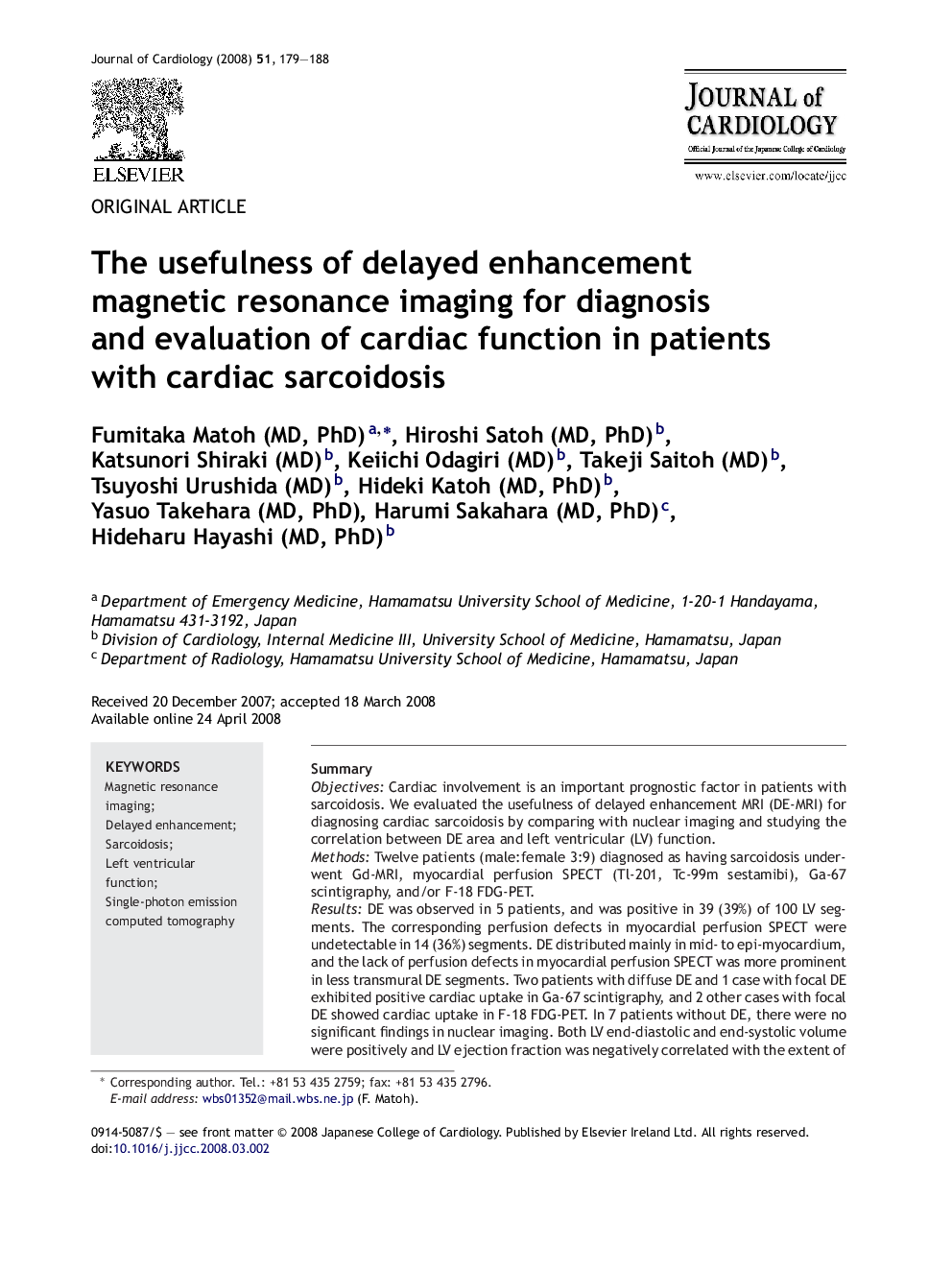| Article ID | Journal | Published Year | Pages | File Type |
|---|---|---|---|---|
| 2963817 | Journal of Cardiology | 2008 | 10 Pages |
SummaryObjectivesCardiac involvement is an important prognostic factor in patients with sarcoidosis. We evaluated the usefulness of delayed enhancement MRI (DE-MRI) for diagnosing cardiac sarcoidosis by comparing with nuclear imaging and studying the correlation between DE area and left ventricular (LV) function.MethodsTwelve patients (male:female 3:9) diagnosed as having sarcoidosis underwent Gd-MRI, myocardial perfusion SPECT (Tl-201, Tc-99m sestamibi), Ga-67 scintigraphy, and/or F-18 FDG-PET.ResultsDE was observed in 5 patients, and was positive in 39 (39%) of 100 LV segments. The corresponding perfusion defects in myocardial perfusion SPECT were undetectable in 14 (36%) segments. DE distributed mainly in mid- to epi-myocardium, and the lack of perfusion defects in myocardial perfusion SPECT was more prominent in less transmural DE segments. Two patients with diffuse DE and 1 case with focal DE exhibited positive cardiac uptake in Ga-67 scintigraphy, and 2 other cases with focal DE showed cardiac uptake in F-18 FDG-PET. In 7 patients without DE, there were no significant findings in nuclear imaging. Both LV end-diastolic and end-systolic volume were positively and LV ejection fraction was negatively correlated with the extent of DE area. Four patients treated with corticosteroid showed improvement in nuclear imaging and slight decreases in DE area but no recovery in LV function.ConclusionsDE-MRI is useful to diagnose the cardiac involvement of sarcoidosis and to evaluate cardiac function. It is likely that the distribution of DE in mid- to epi-myocardium is the characteristic of cardiac sarcoidosis, and the larger DE area may be correlated with poor LV function.
